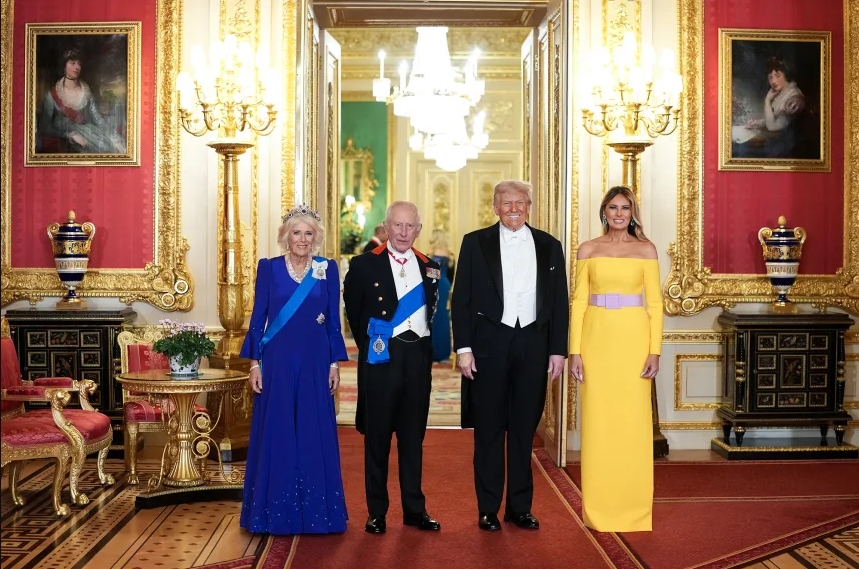In the aftermath of the World Trade Center attacks, a national security crackdown on Arabs kept many Middle Eastern students away from American universities. Because 15 of the 19 hijackers were of Saudi Arabian origin, the Sunni nation was especially hard hit with American reactionary fears.
The U.S. State Department specified in 2004 that about a thousand Saudi Arabian students remained in the country. Today, however, the State Department reports the number of Saudis studying in the United States is well over 71,000 and growing quickly.
Much of this growth can be attributed to a joint pilot program instituted by President George W. Bush and King Abdullah in 2005 to drastically increase the number of Saudi students studying in the U.S.
The program was to benefit both governments: it would lessen the bad reputation Saudi had been branded with after Sept. 11 and it would help curb the rise of anti-Americanism mounting in the Middle East. This seemingly innocuous program has produced effects that have been felt even in the most secluded niches of the U.S. – including Erie, Pa.
At Gannon University, the rise of Saudi Arabian students on campus is unmistakable. Today, there are 239 Saudi students, up from zero in 2006. Alone, they make up 44 percent of the international student population. Their presence dominates the physics classes of the Zurn Science Center and turns its entrances into hazy outlines of cigarette smoke. But even though the Arab cliques are unavoidably conspicuous to Erie natives, that doesn’t mean Americans have taken the time to understand their new neighbors.
Judith Van Rheenen, director of the International Student Office (ISO) at Gannon, says most Saudi students attend Gannon on a Saudi government scholarship that pays for their entire bachelor’s, master’s and Ph. D. programs – along with a living stipend.
Van Rheenen’s office is reminiscent of an eclectic yet organized garage sale, with each trinket hiding a special story that only she understands. In Asian cultures, it is common to bestow a gift on a host or hostess as a sign of gratitude. The bookshelf in Van Rheenen’s office – larger than a doorframe – overflows with vases, dolls, teapots, statues, jewelry boxes and endless other gifts of thanks from former students.
It is easy to understand why the international students seek out Van Rheenen’s assistance, apart from her being the program director. Her clear blue eyes, earnest voice and open demeanor make her an easy person to talk to. Many students and faculty members frequently drop in to chat with her. Above all, Van Rheenen admits to being a curious person.
“I wish more Americans would strike up a conversation, just turn to a foreign student and say, ‘Hey, I don’t mean you any offense, I’m just curious. Why do you dress this way?’ or something like that,” she said spiritedly.
In her mind, the influx of foreigners presents an opportunity for Gannon students to extend their cultural sensitivities beyond the Tri-State area. However, to notice the foreign students at Gannon is also to observe their relative separation from the American students. Though Gannon’s campus is diverse, it also seems to be segregated – whether consciously or unconsciously – into groups of Americans and groups of international students.
Van Rheenen acknowledges this and sighs. “I think sometimes people are afraid of what they don’t understand,” she said. “I think that people will have a curiosity that they won’t act on.”
Though she’d like to see more mixing between the two groups, she says she understands that, “you stick to what you’re familiar with.”
English as a Second Language (ESL) program Associate Director Philomena Rad is conscious of this segregation. Rad, a dark-haired woman with sharp eyes and a Michelle Pfeiffer-voice from years of heavy smoking, can periodically be found on the third floor of Palumbo Academic Center giving a stray student a theatrically stern talking-to for skipping class.
While the wide-eyed, “take-it-easy-on-me-I’m-foreign” routine may work on most professors, Rad is evidently immune to students trying to charm their way out of trouble. However, it is because of this concerned personality that her pupils continually seek Rad – she is the Mrs. Weasley of Gannon’s international family.
Rad suggests that the answer to the separation between nationalities is twofold. First, the American students are very busy living their college lives and the Saudi students may be too shy or not sure of the proper social etiquette. Going up to an American, especially if she’s female, can be very intimidating to a foreign student. That’s why Rad stresses the importance of English Conversation Partners – an ESL program she has led for many years.
“They know that their English isn’t perfect and that can put a fear in them,” Rad stresses. “They’ve got quite a challenge ahead of them… they have to be proficient enough to make it in a university classroom. That’s significant.”
Still, not all of the Saudi students have language deficiencies and the line between international and domestic groups remains sharp.
Wida Ahaihi, a graduate student in the computer science department, has only been in Erie for one month. It is her first time in America, but the confident demeanor she carries under a sand-colored dress and a pure white veil revealing only her long-lashed eyes, makes it seem otherwise.
Her friend, similarly covered, leans casually back on a Burton backpack in Zurn Science Center as Ahaihi discusses her time in Erie.
“Sometimes, yes, I think people may judge me before they know me,” Ahaihi says with composure. “It may make me uncomfortable at times.”
Overall, Ahaihi claims that everyone at Gannon has been welcoming to her. She barks in Arabic to her friend, who is laughing crazily to a YouTube video on her Android, and she stops giggling long enough to agree with Ahaihi. Still, both women plan to return home after they have earned their master’s degrees.
This seems to be a significant pattern for Gannon, which devotes extensive time and resources to educate the Saudis, only to have them depart for good after graduation. In 2009, James Smith, a former U.S. ambassador to Saudi Arabia, claimed that contrary to patterns among many international students who study in America, most Saudi students go home to work after obtaining their degrees. Thus, the nature of the King Abdullah scholarship program raises numerous questions about its overall effectiveness in promoting U.S.-Saudi relations in towns such as Erie.
Van Rheenen describes some local changes she has noticed with optimism, such as the rise in Arab-themed restaurants and hookah bars around town. She hopes that steps like this will get more Americans accustomed to other cultures, as well as give the foreign students more to do in Erie. Van Rheenen laughs as she describes getting feedback from the Saudi students about their time at Gannon. According to her, the most frequent response is:
“Erie is a nice place to study,” which she translates to mean: “There is nothing to do in Erie.”
Van Rheenen does admit that the rise in Saudi students presents some intercultural challenges that were new to conservative Erie. For example, should the university require an uncovered face when taking school ID photos? Though Van Rheenen, Rad and numerous other Gannon faculty members have spent long hours trying to understand the subtleties of Saudi culture in order to enhance the program quality, it remains to be seen whether Gannon’s students have accepted their new peers as earnestly.
Ahmed Nasser, a 26-year old from Riyadh, agrees that there are cultural differences that are hard to get around. With a flat-brim cap, khaki shorts and a band T-shirt, Nasser’s image brings to mind a California surfer rather than a desert Arab.
Leaning back in his chair with one shoe on his knee, he says he’s here to study English – even though he says this comfortably with few mistakes. He talks about the American culture, which is very busy and independent compared to the family-centric priorities of his home country.
“In America, people may not be too interested in meeting others,” Nasser said. “Sometimes people are afraid that they will say the wrong thing and offend someone. Even those like me who understand English may not know all the social practices that go with it.”
Still, Nasser has made many friends in just a few months at Gannon and expresses interest in traveling after graduation or getting a job in America for a few years, rather than immediately returning home.
Whether students like Nasser and Ahaihi decide to stick around or go home after graduation, obtaining an American education is a life-changing opportunity for them. To the typical American student, however, the presence of these foreign students may not be so dramatic.
Thomas Church, a business student who was born and raised in Erie County, shrugs when asked about the Saudi students.
“They seem all right,” Church said. “But honestly, I’ve never talked to one.”
Yohanna Romero, a sophomore early childhood education major, said she has had an opportunity to interact with an international student in a class project as a conversation partner. She acknowledged that it can be difficult to make a connection but its worth making the effort.
“We are so scared to come out of our comfort zone when culture is involved,” Romero said. “Talking to someone who was from a different culture really put in perspective to me how much more the world has to offer.”
Shannon Gross







